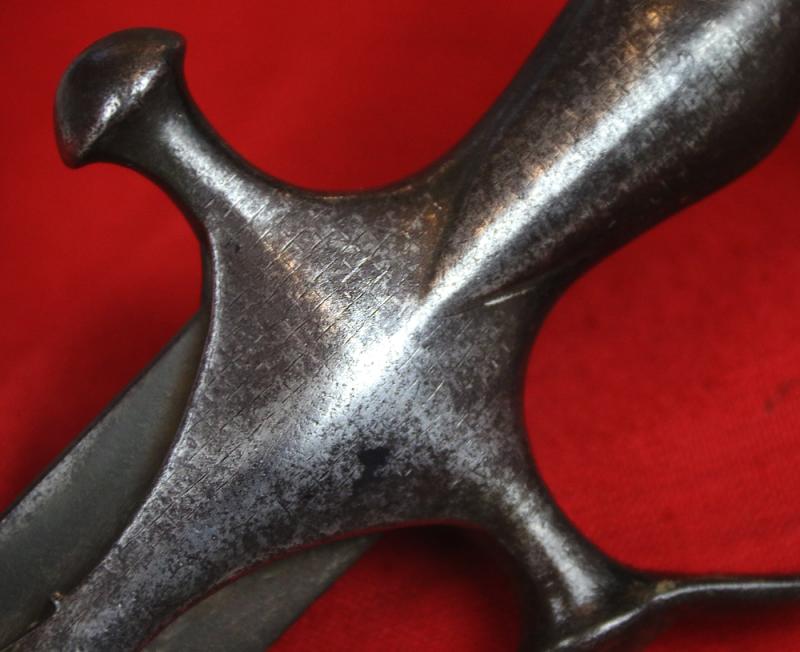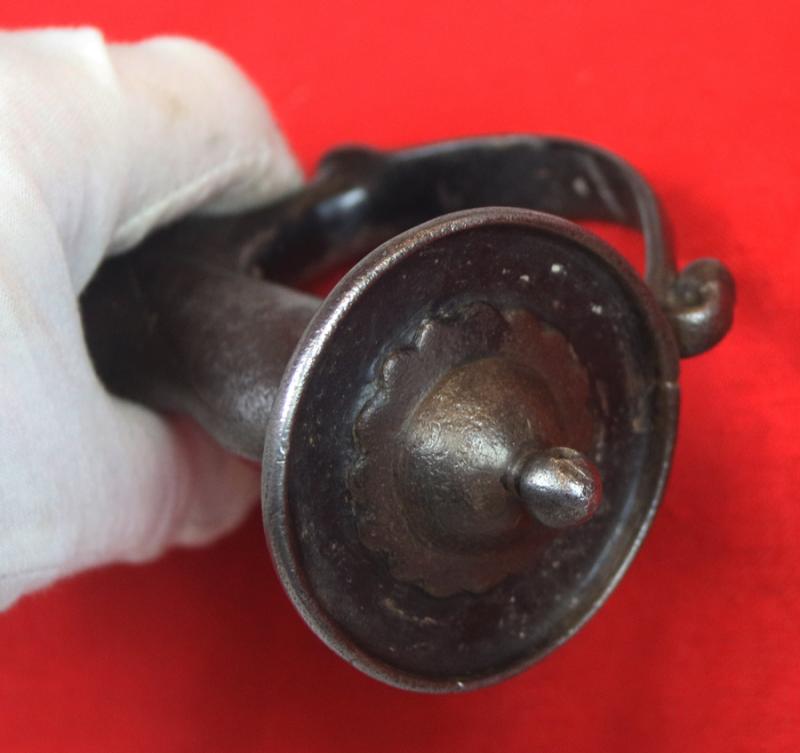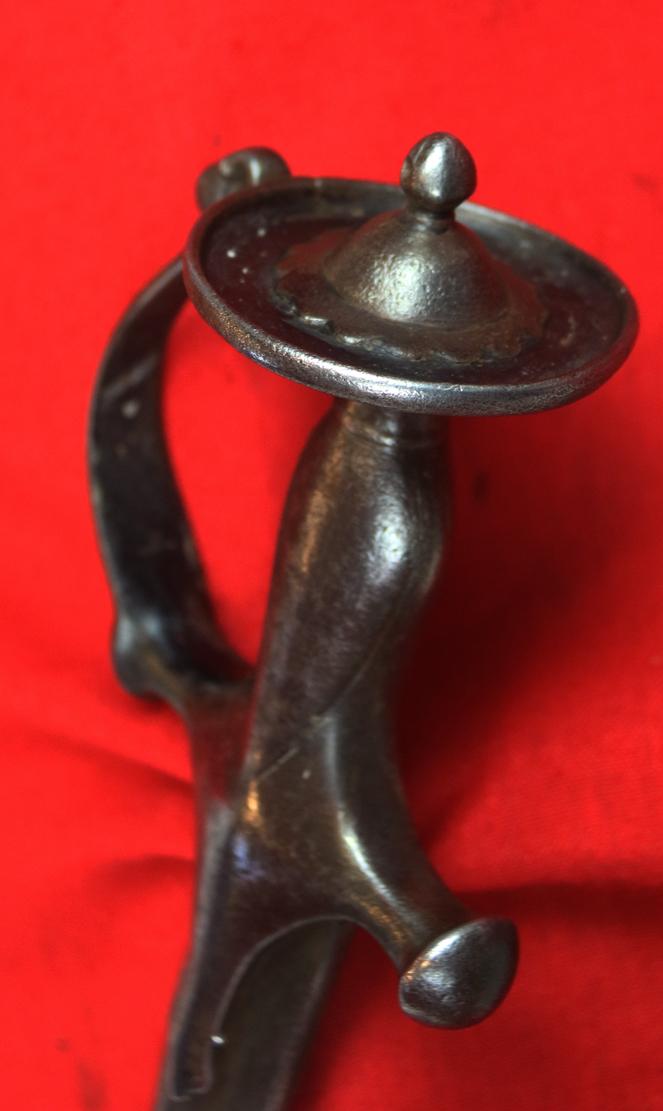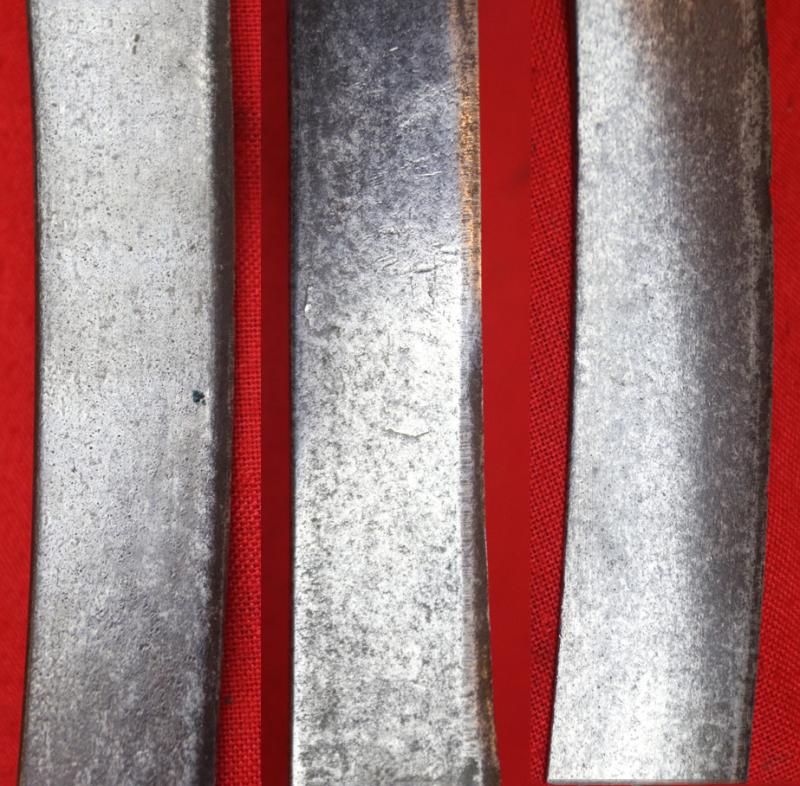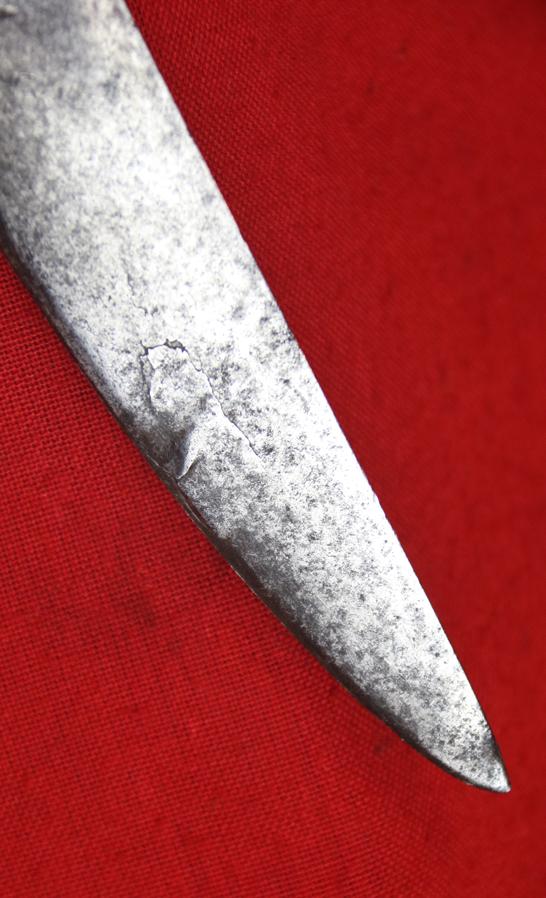A Really Fine and Interesting Late 18th Century Early Sikh Empire Lahore Talwar, With Possibly a Wootz Blade
The hilt also known as tulwar comprises langets with lotus-head outlines, domed quillons, and a centrally swollen grip. A knuckle guard with a terminal that recurves toward the disc-pommel which has been attached with a pointed sunburst plaque, a decorative feature further fitted at its centre with a dome and lotus bud finial. The surface has square sectional patterned engraving that once contained silver inlay.
There are clear indications that this particular hilt is of Punjab manufacture: the fat vase shape of the grip section, the slightly forward angle of the quillons and the former geometric pattern of silver koftgari. The hilt is of slightly larger than average proportions and fits comfortably in the hand.
The blade of considerable size, yet slender, and good quality is fitted to the hilt and could possibly be of wootz - this can only be revealed through a professional etch, polish and cleaning of the blade. We have chosen not to do this to keep the historical integrity of the sword and its age.
The blade shape is purely Persian, of shamshīr (شمشیر) form with a narrow, pointy blade of deep curvature. Such blades are ideal for close-quarters cutters, with the deep curve helping it target specific places that normal swords could not attach. The type of blade is a referred to as a ‘goliya’ (meaning round) in India. The blade is a highly practical one, with several indications impacts etc. that show that it was clearly used in battle.
The blade has an early engraved armoury storage number MN42. What this most beautiful sword lacks somewhat in condition due to combat. It most easily more than makes up for it in historical interest, quality and beauty.
30 inch blade
Code: 24484




